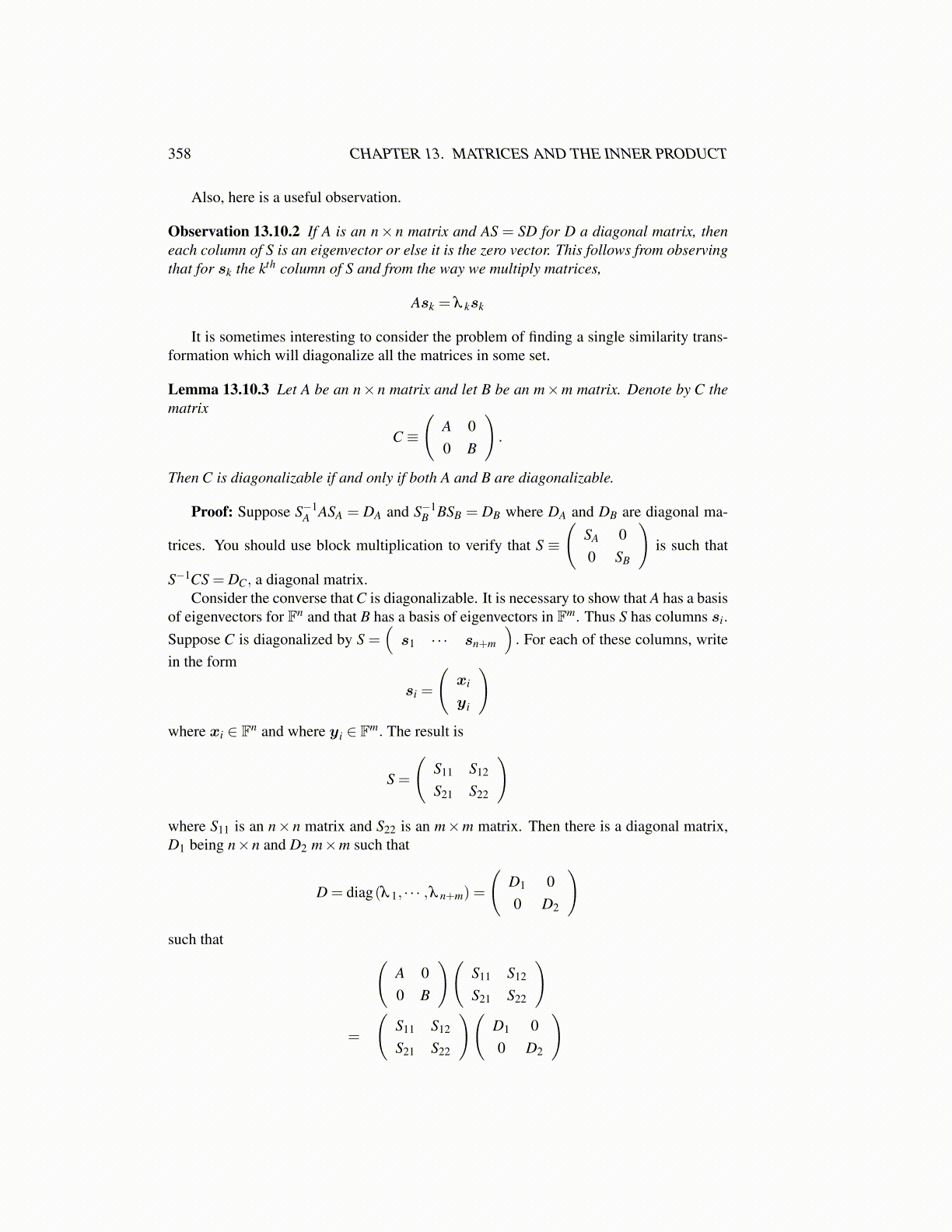
358 CHAPTER 13. MATRICES AND THE INNER PRODUCT
Also, here is a useful observation.
Observation 13.10.2 If A is an n× n matrix and AS = SD for D a diagonal matrix, theneach column of S is an eigenvector or else it is the zero vector. This follows from observingthat for sk the kth column of S and from the way we multiply matrices,
Ask = λ ksk
It is sometimes interesting to consider the problem of finding a single similarity trans-formation which will diagonalize all the matrices in some set.
Lemma 13.10.3 Let A be an n×n matrix and let B be an m×m matrix. Denote by C thematrix
C ≡
(A 00 B
).
Then C is diagonalizable if and only if both A and B are diagonalizable.
Proof: Suppose S−1A ASA = DA and S−1
B BSB = DB where DA and DB are diagonal ma-
trices. You should use block multiplication to verify that S ≡
(SA 00 SB
)is such that
S−1CS = DC, a diagonal matrix.Consider the converse that C is diagonalizable. It is necessary to show that A has a basis
of eigenvectors for Fn and that B has a basis of eigenvectors in Fm. Thus S has columns si.
Suppose C is diagonalized by S =(
s1 · · · sn+m
). For each of these columns, write
in the form
si =
(xi
yi
)where xi ∈ Fn and where yi ∈ Fm. The result is
S =
(S11 S12
S21 S22
)
where S11 is an n×n matrix and S22 is an m×m matrix. Then there is a diagonal matrix,D1 being n×n and D2 m×m such that
D = diag(λ 1, · · · ,λ n+m) =
(D1 00 D2
)
such that (A 00 B
)(S11 S12
S21 S22
)
=
(S11 S12
S21 S22
)(D1 00 D2
)